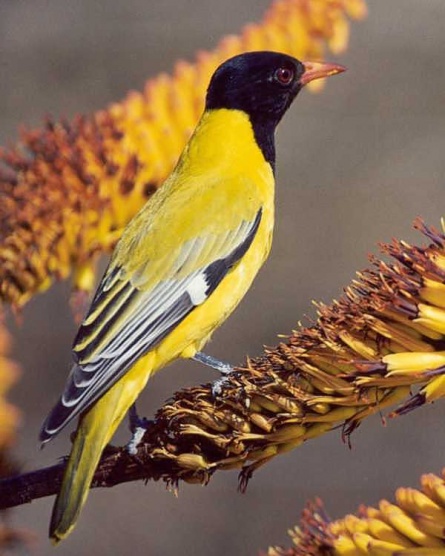
Oriolus larvatus
TAXONOMY
Oriolus larvatus Lichtenstein, 1823, “Terr. Caffror” = Cape
Province, South Africa. Five or six regional subspecies differing
in size and tone of golden plumage.
OTHER COMMON NAMES
English: Black-headed oriole, African black-headed oriole;
French: Loriot а tкte noire oriental; German: Maskenpirol;
Spanish: Oropйndola de Cabeza Negra Africana.
PHYSICAL CHARACTERISTICS
8–8.5 in (20–21.5 cm); 2.2–2.5 oz (60–70 gm). Sexes similar. A
black-headed oriole with citrine back, golden ventrum, and
gray-green wings and tail; only immatures duller and streaked
ventrally.
DISTRIBUTION
Central and southeastern Africa, north to Sudan and southwest
Ethiopia, south to Cape Province, and west through much of
Angola locally to west coast.
HABITAT
Acacia and broad-leaved woodlands, especially in galleries
along streams; also thorn scrub, forest edge, tree plantations,
and gardens.
BEHAVIOR
Solitary and rather sedentary, in pairs or small family groups
only when breeding or at food concentrations. Calls in considerable
variety from tree perches throughout year, mimicking
and giving both fluted glottal warbles and figbird-like
whistles.
FEEDING ECOLOGY AND DIET
Forages mainly in tree crowns, hopping and fluttering, for
fruits and caterpillars. Food comprises both small, soft native
fruits such as figs, grapes, and mulberries, and insects, particularly
large haired and hairless caterpillars, all taken opportunistically.
REPRODUCTIVE BIOLOGY
Monogamous and territorial, pairs holding territories of
12–120 acres (5–50 ha). Breeds erratically year-round in tropics,
but limited to spring and summer in temperate southern
latitudes. Female builds nest and broods, and male holds territory
and assists in rearing young. Nests slung in a three-way
fork in horizontal branches at 15–50 ft (5–15 m) above the
ground. Eggs in clutches of one to two in tropics and two to
three in temperate zone, hatch in 14–15 days; young fledge in
another 15–18.
CONSERVATION STATUS
No forms of this common and widespread species are under
threat.
SIGNIFICANCE TO HUMANS
None known.
Other popular Animals
Photo Gallery of - Eastern black-headed oriole
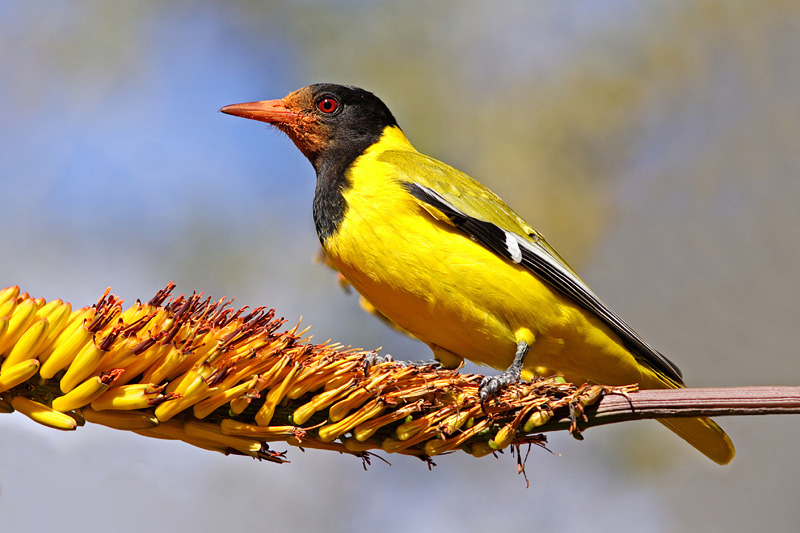
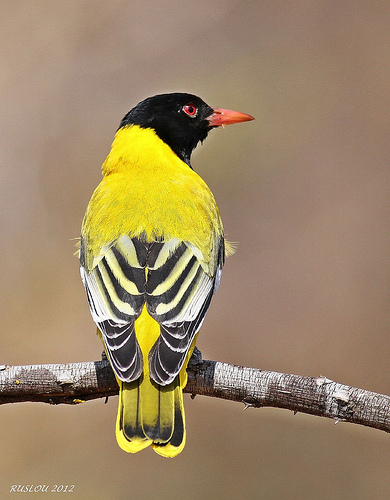
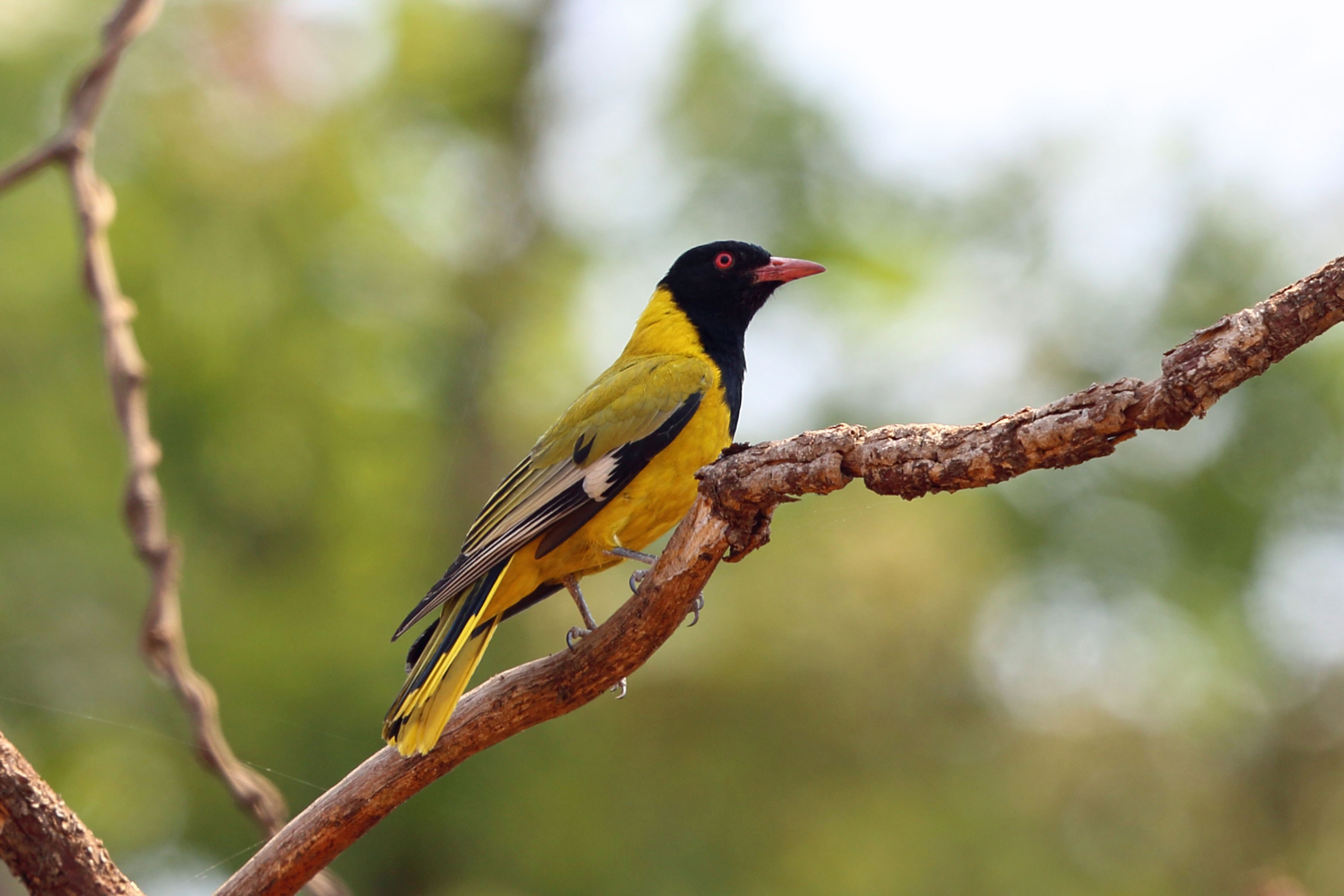
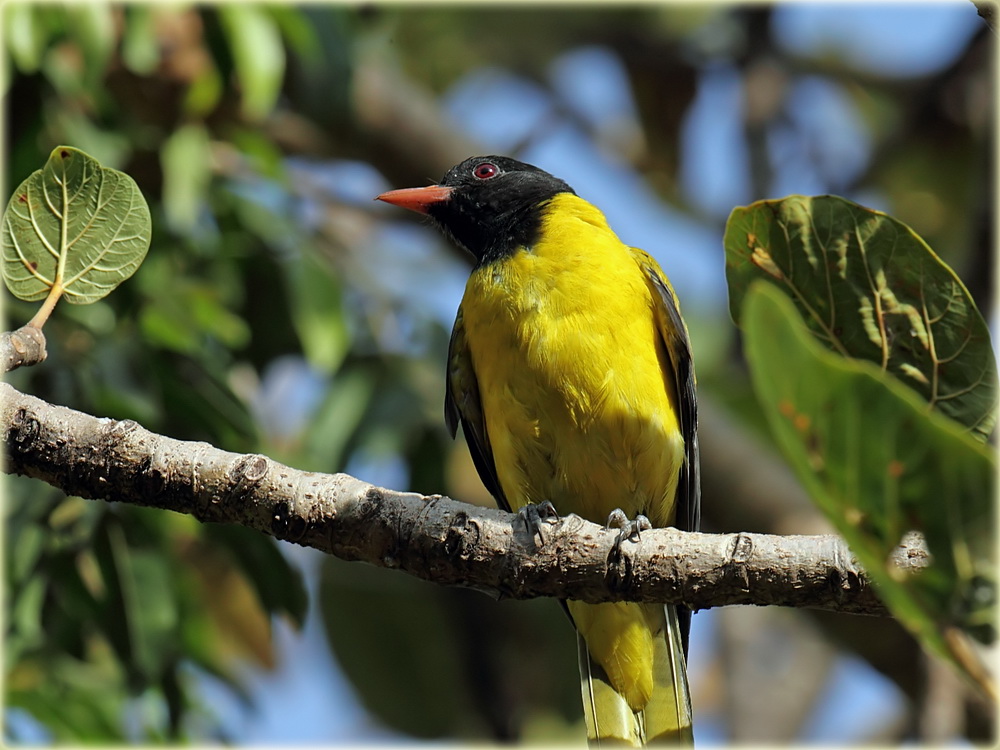
 Animalia Life
Animalia Life